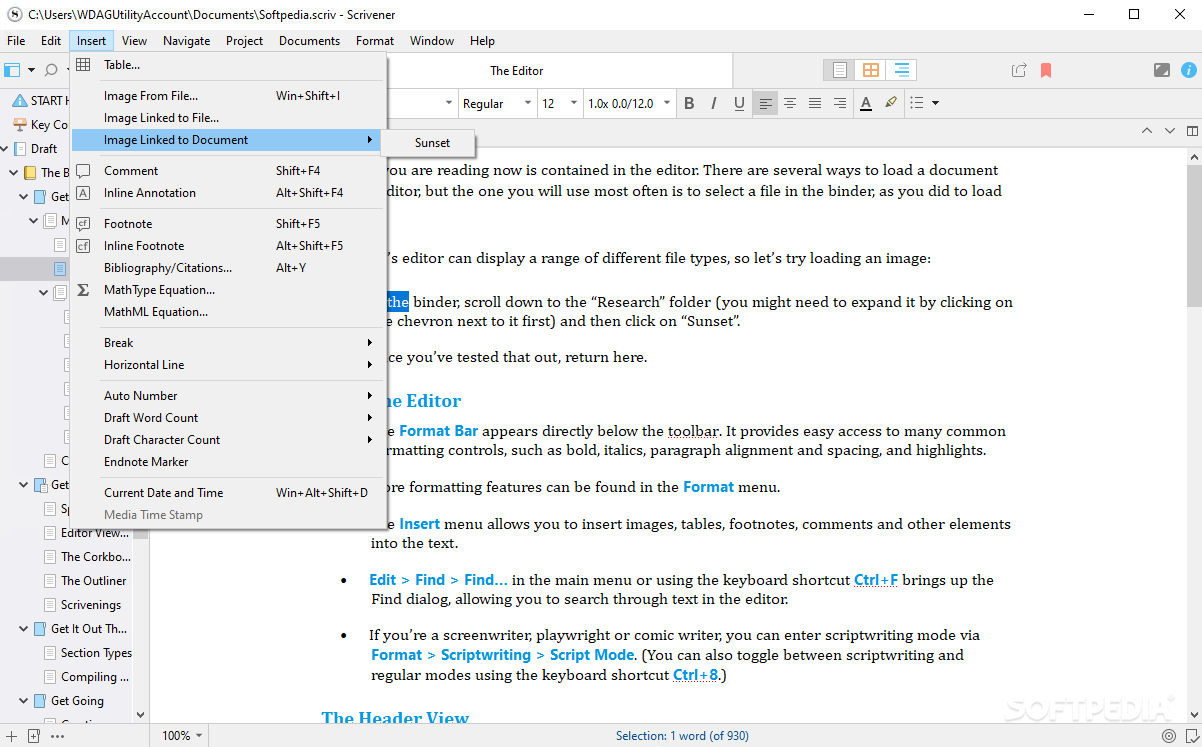


Unfortunately, these services do not always handle Scrivener projects correctly, which can cause some of the component files in your project to appear to be missing or blank. Be cautious with "smart" synchronization: many services will offer you the opportunity to "optimize" your local storage by storing less recently used files exclusively on the company's server.
#SCRIVENER FOR MAC COMPUTER MANUAL#
See §5.2 Backing Up Your Work in the Scrivener Manual (available from the Help menu) or watch our tutorial video on backing up for more information. Backing up locally will ensure that your project has backups on every computer you use Scrivener on. Don't use Dropbox as you may end up overwriting the backup from a different computer. Choose a backup location somewhere on your local hard drive.

Be sure the tick in the green circle is present in the Dropbox icon in your menu or task bar - if it's not, don't open the project: wait until Dropbox is fully synced. Do not open the project before your Dropbox folder is fully synced: if you try to open the project while your Dropbox folder is still syncing files from your other computer, you could be opening it in its old state.If you simply sleep your machine, or let Scrivener close as part of the shutdown sequence, Dropbox might not get a chance to upload the final changes. When closing Scrivener there will be a number of final files that Scrivener saves, and that Dropbox will need to upload. Do not shut down or sleep your computer before Dropbox finishes uploading: it takes time for the files to sync.Always heed this warning and check that the project was closed correctly. Scrivener will warn you if it thinks the project is open on another computer. Never, ever open the same project on more than one computer at a time: Be sure to completely close your project on one computer before leaving that computer and opening it on another machine.As you work on the project, Scrivener will save the files you change on your local hard drive, these will then be automatically uploaded to Dropbox and then downloaded to the other computers using that Dropbox account.įollowing the guidelines below when syncing Scrivener projects will minimise potential problems: If you want to share a Scrivener project then it has to be stored that folder. Once Dropbox is installed on your computer it will create a folder on your hard disk, which will then sync to your Dropbox account. If you are using any of the services listed below then please read the advisory note. The guidelines below are written with Dropbox in mind but would also apply to other similar cloud-sync solutions. A Scrivener project is made up of many linked and interdependent files, and each one needs to be synced correctly to avoid problems with the project. There are many cloud-sync services available but one that works well with Scrivener is Dropbox. If you're looking for advice on iOS syncing, see our article on Dropbox Syncing with iOS.
#SCRIVENER FOR MAC COMPUTER WINDOWS#
This article will cover syncing between macOS and/or Windows computers. If you want to share a Scrivener project between two or more computers you can use a cloud-sync service to automatically sync the project between them.


 0 kommentar(er)
0 kommentar(er)
